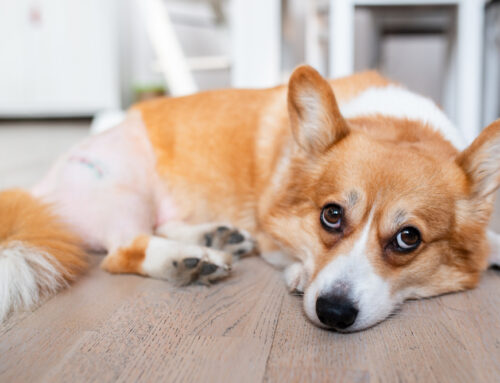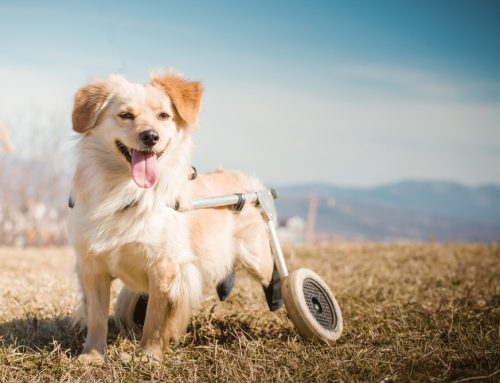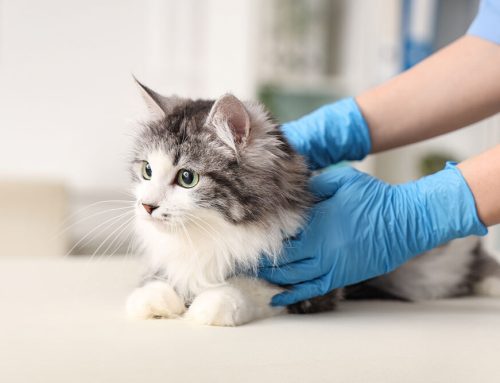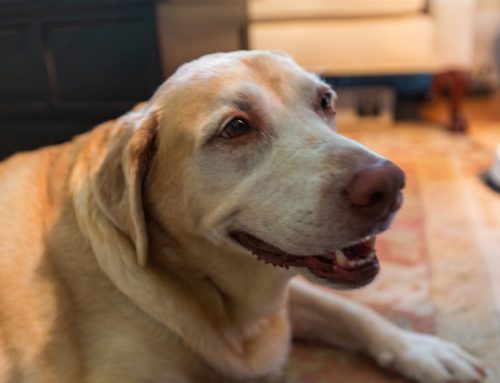An increasing percentage of U.S. cats and dogs are becoming obese. According to the Association for Pet Obesity Prevention (APOP), 59% of dogs and 61% of cats were classified as overweight or obese in 2022. These figures have increased since APOP’s 2018 study in which the organization reported that 55.8% of dogs and 59.5% of cats were overweight or obese.
As the number of obese pets continues to rise, pet owners and veterinary teams must work together to help cats and dogs achieve a healthy weight. Learn about pet obesity and read our Homestead Animal Hospital team’s guide to helping your furry pal lose weight safely and effectively, so they have a longer, healthier life.
Obesity causes in pets
In short, an energy imbalance causes obesity. If your pet consumes an overabundance of energy but does not expend enough of it, they gain weight. However, the reason for your four-legged friend’s weight gain is likely not so simple. Common pet obesity causes include:
- Improper nutrition — Improper nutrition is a major contributing factor to a pet’s obesity. Consider whether you are feeding your pet the wrong diet for their life stage or health status, overfeeding them by providing improperly portioned meals, or giving them too many treats.
- Not enough activity — After a long day of work, you may have difficulty ensuring your pet gets an adequate amount of exercise, but physical activity is essential for weight management and healthy muscles and joints. Aim for at least two 15- to 30-minute concentrated activity sessions per day, depending on your pet’s needs. Cats typically require less exercise than dogs and do better playing in short bursts. Some dog breeds, such as border collies and Belgian malinois, need extensive activity that exercises their mind and body to ward off obesity and behavior problems.
- Genetics — Some dog breeds are bred to be incredibly active working dogs, while others have a more laid-back disposition that predisposes them to weight gain. Basset hounds, beagles, dachshunds, and Labrador retrievers are among the top breeds that become overweight or obese, whereas sighthounds, such as greyhounds, rarely become too heavy.
- Health conditions — Chronic health conditions can affect your pet’s appetite, metabolism, and mobility, leading to weight gain. Hypothyroidism, Cushing’s disease, and osteoarthritis are a few medical reasons that can cause a pet’s weight gain.
- Medications — Certain medications, such as prednisone and phenobarbital, can contribute to weight gain, especially with long-term use.
Safe weight loss techniques for pets

You should plan your pet’s weight loss carefully to ensure they remain safe and healthy. A crash diet can cause your pet to lose weight too rapidly and develop a serious health issue. For example, if you overly restrict your cat’s food, they can develop hepatic lipidosis, a life-threatening liver condition. To help your pet reach and maintain a healthy physique, follow these tips:
- Calculate your pet’s caloric needs — Your pet’s caloric needs change with age, reproductive cycle, activity level, and health status. Use a pet calorie calculator to determine the appropriate amount to feed your pet to help them lose or maintain their weight.
- Measure your pet’s food — After calculating the number of calories your pet needs per day, use a measuring cup to make accurate meal portions.
- Give your pet healthy treats — To be appealing to pets, many commercial treats are high in calories, fat, and sugar. Swap these commercial products for fresh fruits and veggies, and lean cuts of meat.
- Create an exercise plan — Gradually increasing your pet’s activity level will help them gain muscle and stamina, allowing them to exercise safely for longer periods. Find an activity your furry pal loves, such as fetch, agility, or interactive play, and set aside time each day to encourage your pet to be active. If your pet is obese and has been largely inactive, start with low-impact activities, such as walking or basic skills (e.g., sit, down, stand), then gradually increase the intensity and time you spend exercising your pet.
- Schedule a physical exam — By collaborating with our Homestead Animal Hospital team, you can help your pet lose weight safely and effectively. Schedule an initial physical exam so we can determine whether your four-legged friend has an underlying medical condition, and to design a diet and exercise plan. Then, stop by for monthly weigh-ins to determine whether your pet is losing a safe amount of weight.
- Monitor your pet’s body condition score (BCS) — While knowing your furry pal’s weight is important, determining what their ideal body condition should be and their current score is more helpful. A BCS is the pet version of the body mass index (BMI) for people. A pet who has an ideal body condition has an hourglass-shaped waist and a visibly tucked abdomen. Covered with a thin fat layer, their ribs will be easily felt by applying light pressure. If you have to press hard to feel their ribs, pelvic bones, or backbone, your pet is too heavy.
Sometimes, a standard diet and exercise alone are not enough to help your pet lose weight. If your pet is struggling to reach their ideal weight, schedule an appointment with our Homestead Animal Hospital team.
















Leave A Comment